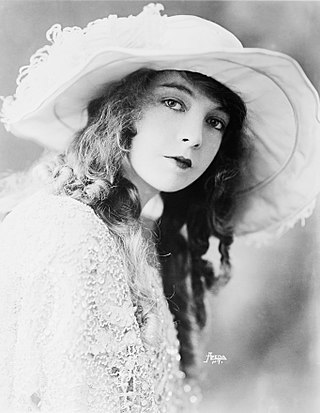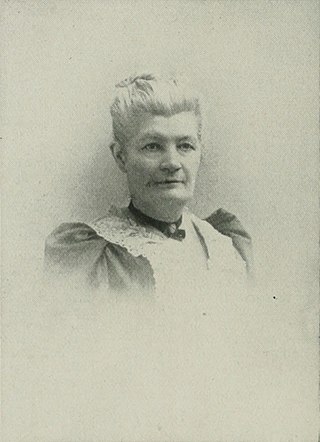Related Research Articles

Lillian Diana Gish was an American actress, director, and screenwriter. Her film-acting career spanned 75 years, from 1912, in silent film shorts, to 1987. Gish was called the "First Lady of American Cinema", and is credited with pioneering fundamental film performance techniques. In 1999, the American Film Institute ranked Gish as the 17th greatest female movie star of classic Hollywood cinema.

Dorothy Elizabeth Gish was an American actress of the screen and stage, as well as a director and writer. Dorothy and her older sister Lillian Gish were major movie stars of the silent era. Dorothy also had great success on the stage, and was inducted into the American Theater Hall of Fame. Dorothy Gish was noted as a fine comedian, and many of her films were comedies.

Donald William Crisp was an English film actor as well as an early producer, director and screenwriter. His career lasted from the early silent film era into the 1960s. He won an Academy Award for Best Supporting Actor in 1942 for his performance in How Green Was My Valley.

Roll of Thunder, Hear My Cry is a 1977 novel by Mildred D. Taylor. Part of her Logan family series, it is a sequel to her 1975 novella Song of the Trees. It won the 1977 Newbery Medal.

Judith of Bethulia (1914) is an American film starring Blanche Sweet and Henry B. Walthall, and produced and directed by D. W. Griffith, based on the play "Judith and the Holofernes" (1896) by Thomas Bailey Aldrich, which itself was an adaptation of the Book of Judith. The film was the first feature-length film made by pioneering film company Biograph, although the second that Biograph released.

Logan Carlisle Ramsey Jr. was an American character actor of television and film for nearly 50 years.

Crazy to Marry is a 1921 American silent comedy film directed by James Cruze and starring Fatty Arbuckle. Prints are held by Cinematheque Royale de Belgique, Brussels and Gosfilmofond, Russian State Archive, Moscow.

The House of Darkness is a 1913 American short drama film directed by D. W. Griffith.

A Romance of Happy Valley is a 1919 American drama film directed by D. W. Griffith and starring Lillian Gish. Believed lost for almost 50 years, a print was discovered in 1965 in the State Film Archives of the Soviet Union, which donated it to the Museum of Modern Art.
Lawyer Quince is a 1924 British comedy film directed by Manning Haynes and starring Moore Marriott, Cynthia Murtagh and Charles Ashton. It is based on a short story by W. W. Jacobs and is a remake of a 1914 film version.
Lawyer Quince may refer to:
Gregory Scott was a British film actor of the silent era. He was born Gregory Scott Frances on 15 December 1879 in Sandy, Bedfordshire, England.
The House of Temperley is a 1913 British silent drama film directed by Harold M. Shaw and starring Charles Maude, Ben Webster and Lillian Logan. It is based on the 1896 novel Rodney Stone by Arthur Conan Doyle and is sometimes known by the alternative title Rodney Stone. The House of Temperley was the first film made by the London Film Company and first shown in Nottingham.

Lillian Logan was an American actress based in Britain. She was born in Chicago, and studied as a singer in Milan and Berlin.
Beauty and the Barge is a 1914 British silent comedy film directed by Harold M. Shaw and starring Cyril Maude, Lillian Logan and Gregory Scott. It is an adaptation of the 1905 play Beauty and the Barge by W. W. Jacobs. A sound version of the same story was released in 1937.
Scott M. Kopytko Triangle is a 0.0023-acre (100 sq ft) public green space in the Flushing neighborhood of Queens, New York City. It is bound by 158th Street, Oak Avenue, and Quince Avenue. The triangle's shape is the result of two street grids intersecting with each other to form this small green space. To the park's west, streets named after plants, such as Poplar, Quince, and Rose, recall Flushing's past as America's premier horticultural center at the site of what is now Kissena Park. William Prince established the New World's first commercial nursery in Flushing 1735.

The Pink Opera-Cloak, also as The Pink Opera Cloak is a 1913 American silent film drama produced by Hardee Kirkland. The film stars Adrienne Kroell, Lillian Logan, Rose Evans and Carl Winterhoff. The film status is uncertain but a release flier survives which is now at the Margaret Herrick Library at the Academy of Motion Pictures Arts and Sciences, it was part of the Charles G. Clarke collection.
She Stoops to Conquer is a 1914 British silent historical comedy film directed by George Loane Tucker and starring Henry Ainley, Jane Gail and Gregory Scott. It is an adaptation of Oliver Goldsmith's play She Stoops to Conquer.

Emily Maria Scott was an American artist. The New York Watercolor Club, and the Pen and Brush Club were formed in her studio. She was also a writer of magazine articles. She served as president of the National Association of Women Painters and Sculptors, vice president New York Water Color Club, and was a member of the Pen and Brush Club, the American Water Color Society, the New York Women's Art Club, and the National Arts Club."
References
- ↑ "BFI | Film & TV Database | LAWYER QUINCE (1914)". Archived from the original on 23 October 2012. Retrieved 13 June 2011.